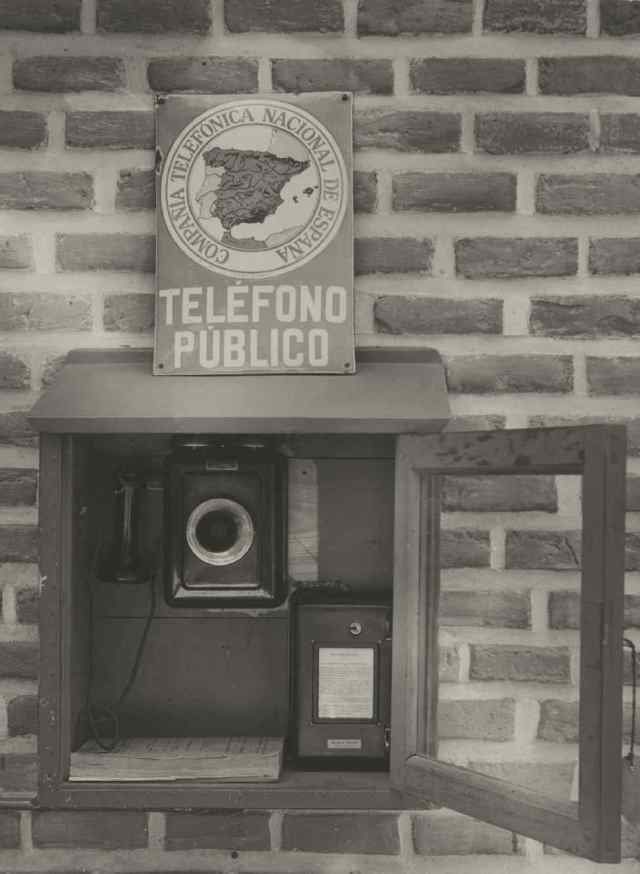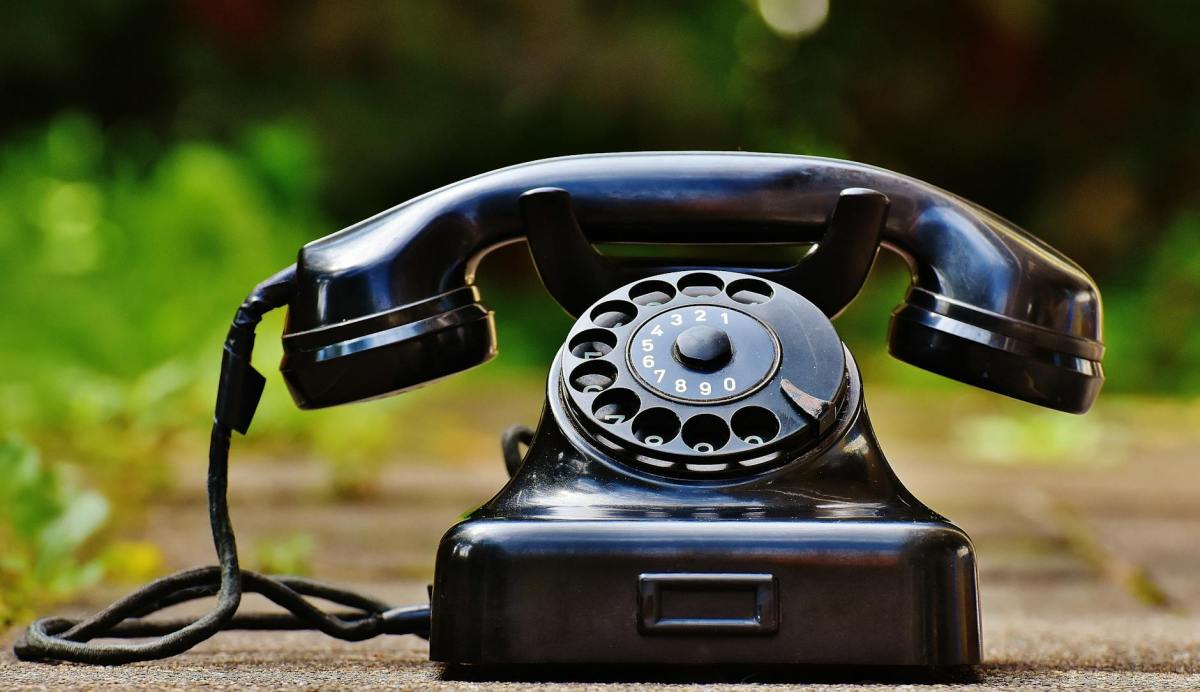- Although patented in 1876 by Alexander Graham Bell, Antonio Meucci was recognised as the legitimate inventor of the telephone in 2002.
- In 1854, Meucci built a device he called the “teletrofono” to connect his office with his bedroom, where his sick wife was bedridden.
- A telephone operator who diverted all calls to her husband’s funeral home led Almon Brown Strowger, who owned a funeral home that was losing customers for this reason, to create an automatic calling system in the late 19th century.
Who invented the telephone?
It may be a simple question, but for decades the answer was not so simple. In fact, until 2002, when the US Congress did not recognise Antonio Meucci, Alexander Graham Bell was considered the inventor of this device.
And what was the reason? Well, because, as Quevedo (the writer, although Góngora would have liked it better if we were talking about the singer) would say: a mighty gentleman is a gentleman with money.
Graham Bell patented the telephone in 1876
The Scottish inventor and scientist Alexander Graham Bell patented the telephone on 7 March 1876, three days later making the famous (and elementary, since we were talking about literature in the previous paragraph) call to his assistant: ‘Mr Watson, come here, I want to see you’.
The enormous success and popularisation of this patent boosted the level of knowledge of Graham Bell, who, controversy aside, turned this device into a means of mass communication with the founding of the Bell Telephone Company in 1977. A company which, after mergers and modifications, is the seed of today’s AT&T, one of the largest telecommunications companies in the world.
Antonio Meucci, creator and legitimate inventor of the telephone (150 years later)
However, as was proven a century and a half later, the legitimate inventor of the telephone was the Italian Antonio Meucci, who in 1854 built a device – which he called a ‘telephon’ – with which he connected his office to his bedroom, on an upper floor of his home, in order to communicate with his wife, who was immobilised and suffering from rheumatism.
The lack of budget to patent it, together with a series of misfortunes and calamities (such as the disappearance of the prototype or his wife’s need to sell her work to a moneylender because of an accident at Meucci’s home, without being able to get it back later) led the Florentine-born inventor to decades of litigation after having publicly presented the invention in 1860.
But Bell’s financial power, including bribes, meant that all of Meucci’s attempts to gain official recognition of the invention’s authorship came to nothing. His death in 1889 seemed to be the end of the dispute.
However, this was not the case. A century later, on 11 June 2002, in its resolution 269, the US Congressional Record acknowledged that ‘had Meucci been able to pay the $10 fee to maintain the proviso after 1874, no patent could have been issued to Bell’, adding that ‘it is the sense of the House of Representatives that the life and achievements of Antonio Meucci should be recognised,’ as well as ‘his work in inventing the telephone’.
What does a funeral home have to do with automating calls?
Telephony progressed from these origins and already at the end of the 19th century left us with a curiosity about the transition from telephone operator calls to automatic calls.
In 1886, Almon Brown Strowger started running an undertaker’s business in Kansas City (Missouri), where he had moved shortly before. He blamed the lack of customers on not being known in the city, but discovered that the reason was different.
At a time when telephony was entirely manual, it turned out that a telephone operator in the city was forwarding calls to her main competitor in the funeral business, who happened to be her husband…
With the help of a friend, he succeeded in 1892 in building the first fully automatic 99-subscriber switchboard with his ‘step-by-step’ system, which was to be used in the future by other types of exchanges such as the Rotary.
In 1898 Strowger sold the patent for his invention for 1,800 dollars and his share in his company (Strowger Automatic Telephone Exchange) for 10,000 dollars. Years later, in 1916, the Bell Company (AT&T) bought the invention, known as the Strowger switchboard, for 2.5 million dollars, although it was not used until 1920, when it definitively opted for automation in the urban environment after a staff strike.
History of the mobile phone
Although strictly speaking we are dealing with a disruption to the fixed telephony we have been talking about throughout this article, mobile telephony is a technological innovation that is also part of the evolution of the history of telephony.
More than half a century ago, in 1973, a Motorola engineer named Martin Cooper made the first mobile phone call. Ten years later, in 1983, the company began marketing a mobile device, although it was a very different device from our current standards.
As it weighed more than a kilo and had considerable dimensions (33cm x 4.5cm x 8.9cm), it also had limited autonomy: for thirty minutes of conversation it required about ten hours of charging.
These features, together with the market price (almost 4,000 US dollars), meant that at first its use was not popular and it remained something limited to people with high purchasing power. However, one year after its launch, 300,000 people already owned a mobile phone.
The first smartphone in history
In 1994, IBM’s Simon, considered to be the first smartphone in history, was launched. A type of device, the smartphone, which has completely changed not only telephony but practically every aspect of our daily lives.
The evolution of this type of device over the last three decades has varied enormously until reaching an unprecedented level of popularisation and democratisation. In fact, there are currently 8.65 billion mobile connections in 2024 on the planet as a whole, more than there are inhabitants.
Of these total connections, 82% come from smartphones compared to 15% from conventional mobile phones, with the remaining 3% coming from other types of mobile devices such as tablets.
The relevance of mobile phones in our lives is such that, on average, each inhabitant of the planet spends five hours a day using them.
Telephony in Spain: origin, history and evolution
The history of telephony in Spain is intimately linked to Telefónica, as it could not be otherwise.
History of telephony in Spain up to 1924
The last decades of the 19th century and the first decades of the 20th century were marked by changing regulations, isolated lines, inconsistent construction materials and large areas of the country without access.
As a curiosity, the first telephone communication in Spain took place in Cuba in 1877, a territory that was then a Spanish province. In December of the same year, the first call was also made within the peninsula, specifically in Barcelona between Montjuïc Castle and Ciutadella via an army telegraph line.
Its success led the promoters, Francesc Dalmau and his son Tomás, to develop the first interurban call between the Catalan capital and Girona a year later, in 1878.
The birth of Telefónica just over a century ago marked a before and after. In fact, José Tafur, the state’s Director General of Communications in 1923, referred to the telephone service in the country in these blunt terms at the time: ‘There is nothing, because the very little we have is so bad that it is worse, a thousand times worse than having nothing at all’.
History of telephony in Spain since 1924
From 1924 onwards, the historical evolution of the telephone service in Spain goes hand in hand with Telefónica.
In 1926 the country already had 100,000 telephones in service. This decade, the 1920s, saw another milestone in telephony: in 1928, the first transoceanic call was made from the Telefónica building on Madrid’s Gran Vía, between Alfonso XIII and US President Calvin Coolidge.
After exceeding 20 million calls per year in the 1930s, another curiosity came in the 1940s: in 1943 the telephone directory was regularised, which, although it began to be called that in the previous decade, also had a change of format: from the size of a sheet to a sheet of paper.
1955 brought one of the great milestones of telephony in Spain with the installation of the one millionth telephone, the eleventh country in the world to reach this figure.
Although it would become popular from 1966 onwards, in 1963 the first public telephone booths were installed in Spain, in Madrid and Barcelona, although the first public telephone in Spain had been installed in 1928 in the Retiro Park in the capital. The booths were part of the urban landscape until 2022, when they ceased to be considered a ‘universal service’.

Telefónica also brought mobile telephony to Spain in the 1970s. Specifically, in 1976, with the TAV (Automatic Telephone in Vehicles) service which, as its name suggests, was intended for cars, barely three years after its first use, as we mentioned above. Two years later, another significant figure was reached: 10 million telephones installed.
A century after the start of automation, as we have previously explained, the last call made by an operator in Spain arrived in 1988, specifically in the Andalusian town of Polopos (province of Granada).
Another curiosity is that, in 1999, Spain became the first European country to have ADSL technology.
FAQ
Antonio Meucci.
In 1854.
He called it the “teletrofono” and used it to connect his office to his bedroom, where his sick wife was bedridden.
Alexander Graham Bell on 7 March 1876.
On 11 June 2002, in its resolution 269, the Official Gazette of the United States Congress recognised Meucci as the inventor.








